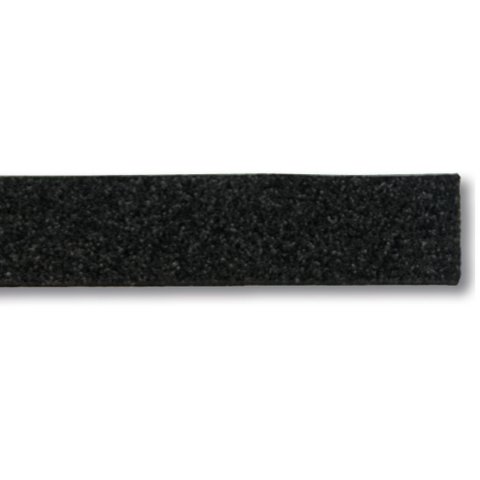
| Location in Store | EGJ22A |
|---|---|
| Article No. | 0317491 |
EPDM, fine foam texture
Cellular rubber is a closed-cell foam produced in an expansion process that utilizes natural or synthetic caoutchouc. It consists of the synthetic caoutchouc EPDM, a material that has good aging-resistance and weather-resistance properties and is also resistant to many chemicals.
Because of its impermeability to water and air and its amenability to being processed (punched, milled), cellular rubber is often used as a sealant material. In the form of self-adhesive strips it can also be used as a buffer (door seal) or a dampener. Its foam is mainly distinguished from standard foam rubber, which includes a percentage of open cells, by its closed cell structure. When being used as a seal, cellular rubber, unlike foam rubber, does not require an outer skin (coating).
Cellular rubber can be easily cut with a CUTTER or a blade or shapes punched by using standard tools.
We offer our sealing strips in a group that includes both the foam rubber and cellular rubber versions. The basic raw material is the same, their adhesive and material properties are very similar and their fields of application as well. There are differences in the physical dimensions and most noticeably in the surfaces (where that of foam rubber is smooth and closed whereby that of cellular rubber is open-celled (only on the surface!). The frictional resistance of foam rubber in relation to most materials is therefore much higher: if you need a foam rubber adhesive strip that has anti-slip characteristics, standard foam rubber should be your choice.
Free standard delivery within Germany and free collection from Modulor in Berlin for orders over 89 €.
5,95 € shipping costs, if order value is less than 89 € (DE)
2,95 € for pick-up at the store in Berlin, if order value is less than 89 €
Express and forwarding shipping
From 19 € express surcharge you will receive your order particularly quickly with standard shipping within Germany.
From 69€ is the cost of shipping within Germany. You can recognize articles with forwarding shipping in the store by the truck symbol .
Especially for Berlin
From 34.90 € courier shipping for standard and forwarding goods.
- Free returns for standard shipping within Germany
- Extended, voluntary return policy of 30 days for complete, undamaged goods in their original packaging
- You are responsible for the cost of returns for forwarding goods and returns from a country outside Germany
Excluded from returns
Excluded from returns are sections of rolled goods, cut-to-size pieces and other goods made especially for you, as well as used goods, newspapers, magazines and periodicals, Modulor vouchers and items that we do not carry in our range but have ordered at your request.
Good to know: The furniture variants in our configurators that can be delivered quickly are not cut to size, but standard formats that can be returned.